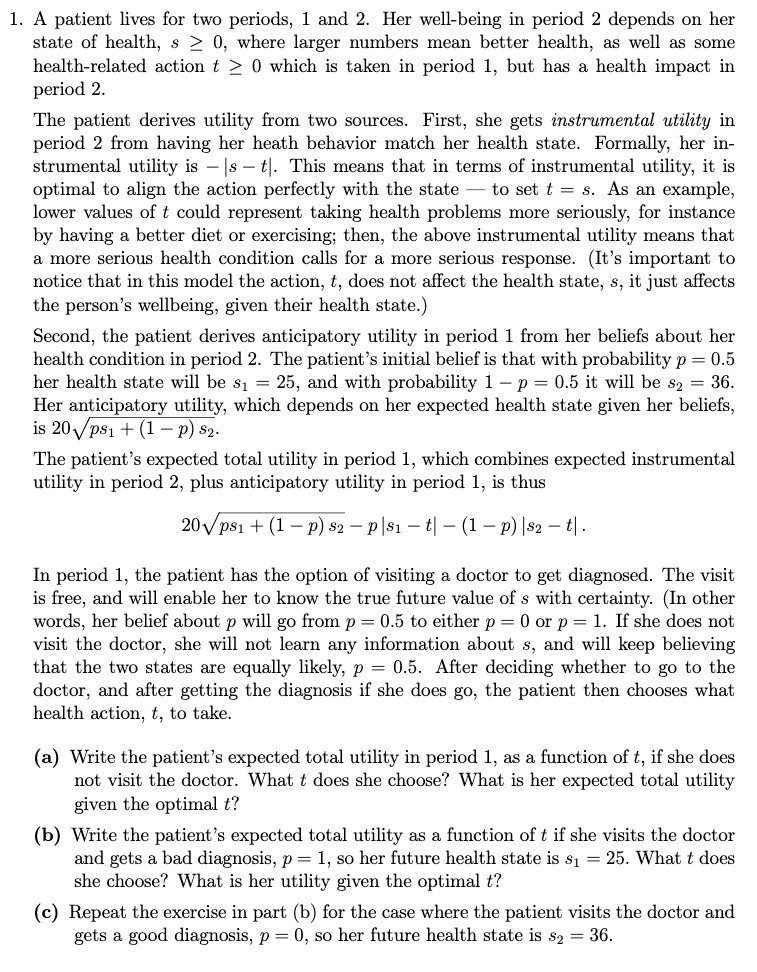1. A patient lives for two periods, 1 and 2. Her wen-being in period 2 depends on her state of health, 3 2 D, where larger numbers mean better health, as well as some health-related action t 33 0 which is taken in period 1, but has a health impact in period 2. The patient derives utility from two sources. First, she gets instrumental utility in period 2 from having her heath behavior match her health state. Formally, her in- strumental utility is |s t|. This means that in terms of instrumental utility, it is optimal to align the action perfectly with the state to set t = s. As an example, lower values of t could represent taking health problems more seriously, for instance by having a better diet or exercising; then, the above instrumental utility means that a more serious health condition calls for a more serious response. (It's important to notice that in this model the action, t, does not affect the health state, 3, it just affects the person's wellbeing, given their health state.) Second, the patient derives anticipatory utility in period 1 from her beliefs about her health condition in period 2. The patient's initial belief is that with probability p = {1.5 her health state will be 51 = 25, and with probability 1 p = 0.5 it will be 32 = 36. Her anticipatory utility, which depends on her expected health state given her beliefs, is 20 psi + (1 p) 32. The patient's expected total utility in period 1, which combines expected instrumental utility in period 2, plus anticipatory utility in period 1, is thus Zvrsl +(1 -p)32 -e|31-t| - (1 wills-ti- In period 1, the patient has the option of visiting a doctor to get diagnosed. The visit is free, and will enable her to know the true future value of s with certainty. (In other words, her belief about p will go from p = [1.5 to either p = D or p = 1. If she does not visit the doctor, she will not learn any information about 3, and will keep believing that the two states are equally likely, p = 0.5. After deciding whether to go to the doctor, and after getting the diagnosis if she does go, the patient then chooses what health action, t, to take. (a) Write the patient's expected total utility in period 1, as a function of t, if she does not visit the doctor. What t does she choose? \"What is her expected total utility given the optimal t? (b) 1Write the patient's expected total utility as a function of t if she visits the doctor and gets a bad diagnosis, p = 1, so her future health state is s] = 25. 1What t does she choose? Mat is her utility given the optimal t? (c) Repeat the exercise in part (b) for the case where the patient visits the doctor and gets a good diagnosis, p = D, so her future health state is 33 = 35







